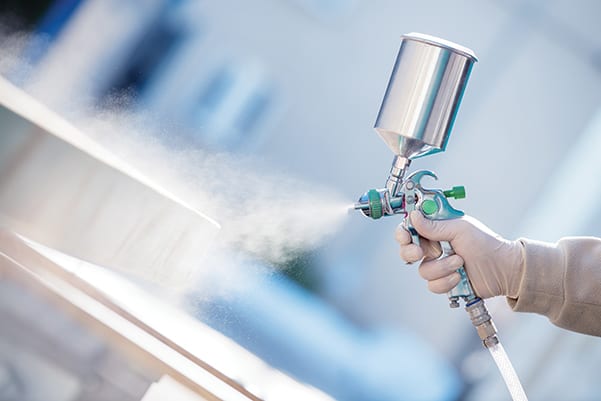A group of Australian scientists has created a sprayable covering that can block the surface spread of infection from bacteria and viruses, including COVID-19, for a prolonged length of time.
The spray works in two ways: it repels viruses and bacteria through an air-filled barrier, and it kills pathogens through tiny components if the layer is destroyed or immersed for an extended length of time. The spray is constructed of a mix of polymers that are tough enough to replace bullet-proof glass. The coating is the only permanent surface layer shown to protect surfaces against viral infection, making it a dependable alternative to traditional disinfectants, which are becoming less effective and require reapplication on a regular basis.
According to the scientists, the coating might be used to limit the transmission of common viruses and germs on public surfaces such as lift buttons, stair rails, and surfaces in hospitals, nursing homes, schools, and restaurants.
The transmission of viral and bacterial diseases through contact with surfaces, according to Professor Antonio Tricoli of the University of Sydney’s School of Biomedical Engineering, is a primary source of infection globally. Surface pollution also plays an important role in the emergence of antibiotic-resistant bacterial species.
“Without a barrier, viruses such as coronaviruses can remain infectious on surfaces for up to a week.” Other viruses, such as reoviruses, which can cause colds or diarrhoea, can remain on surfaces for several weeks, causing large outbreaks in hospitals and nursing homes,” Professor Tricoli explained.
“The surface spray, like a lotus leaf, creates a water-repellent coating.” Because pathogens prefer to be in the water, they remain trapped in the droplets, protecting the surface from contamination. If this mechanism fails, carefully designed nanomaterials dispersed in the coating trigger a secondary burst of ions,” Professor Tricoli explained.
The spray was developed over a five-year collaboration by a multi-university research team, with funding from the Australian Research Council and the National Health and Medical Research Council.
The team evaluated the coating’s mechanical stability and surface energy. They also tested its resistance to bacteria and viruses by exposing it to high concentrations of both. To test the spray’s resistance to contamination, the samples were submerged for extended periods of time and then sprayed surfaces were deliberately damaged.
“We’ve identified the mechanical processes that underpin how the spray works and quantified its effectiveness in various environments,” Professor Nisbet said.
“We tested metal surfaces for this study.” However, we have previously demonstrated that the spray can be applied to any surface, including blotting paper, plastic, bricks, tiles, glass, and metal. Our coating successfully prevented up to 99.85% and 99.94% of bacteria strain growth. We also noticed an 11-fold decrease in virus contamination.”
The spray is applied in the same way that sprays paint is, but in much smaller quantities.
“To provide ultra-durability, the coating was engineered using a simple and scalable technique and a careful selection of materials.” “We also believe that our explanation of the mechanism underlying the antimicrobial and antiviral effects could significantly advance research in antipathogen technologies, allowing for the low-cost production of an effective surface spray to protect people from viruses and bacteria,” Professor Nisbet said.
The researchers have launched a start-up firm to enhance the technique and commercialise the spray within three years.

